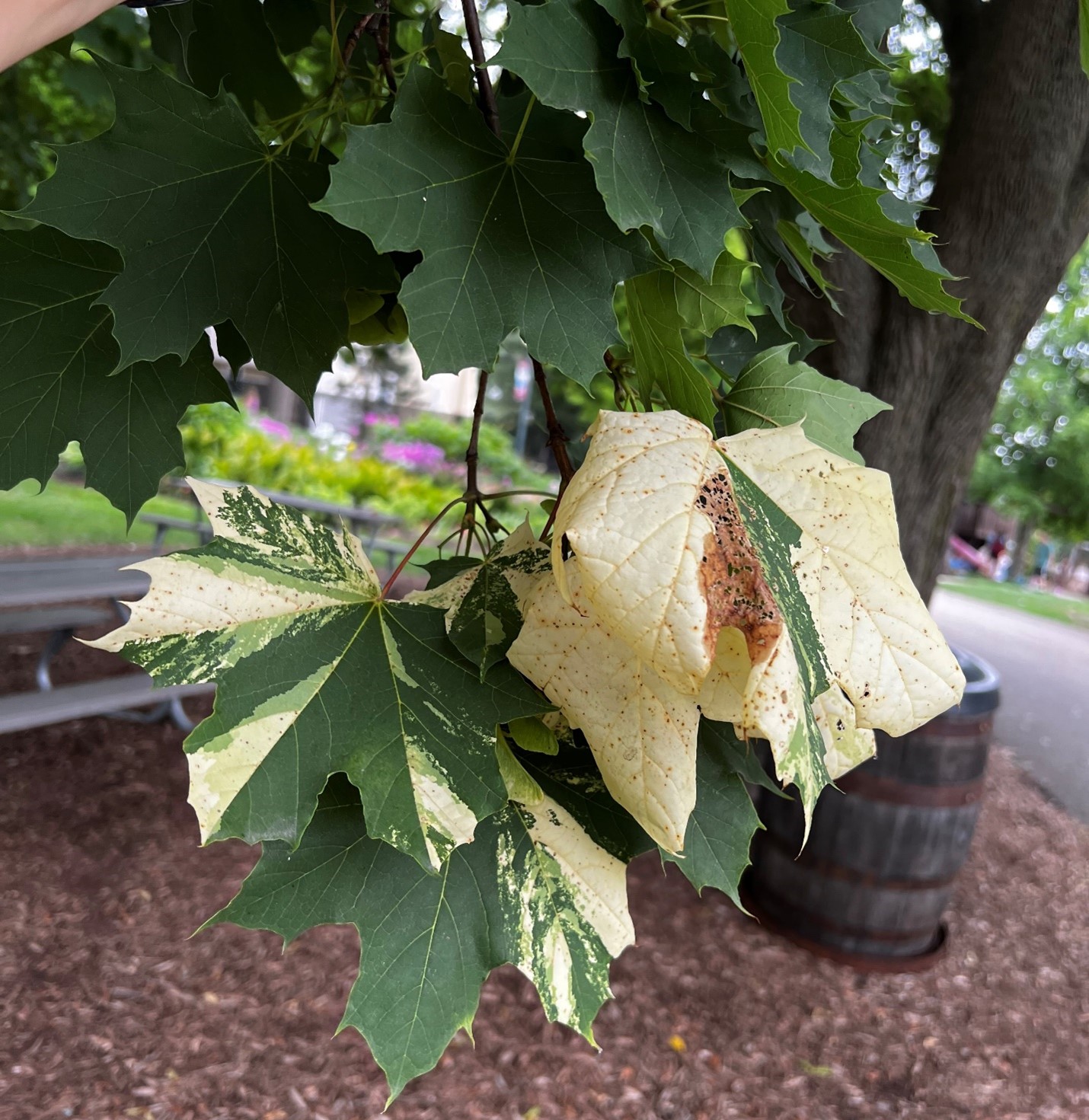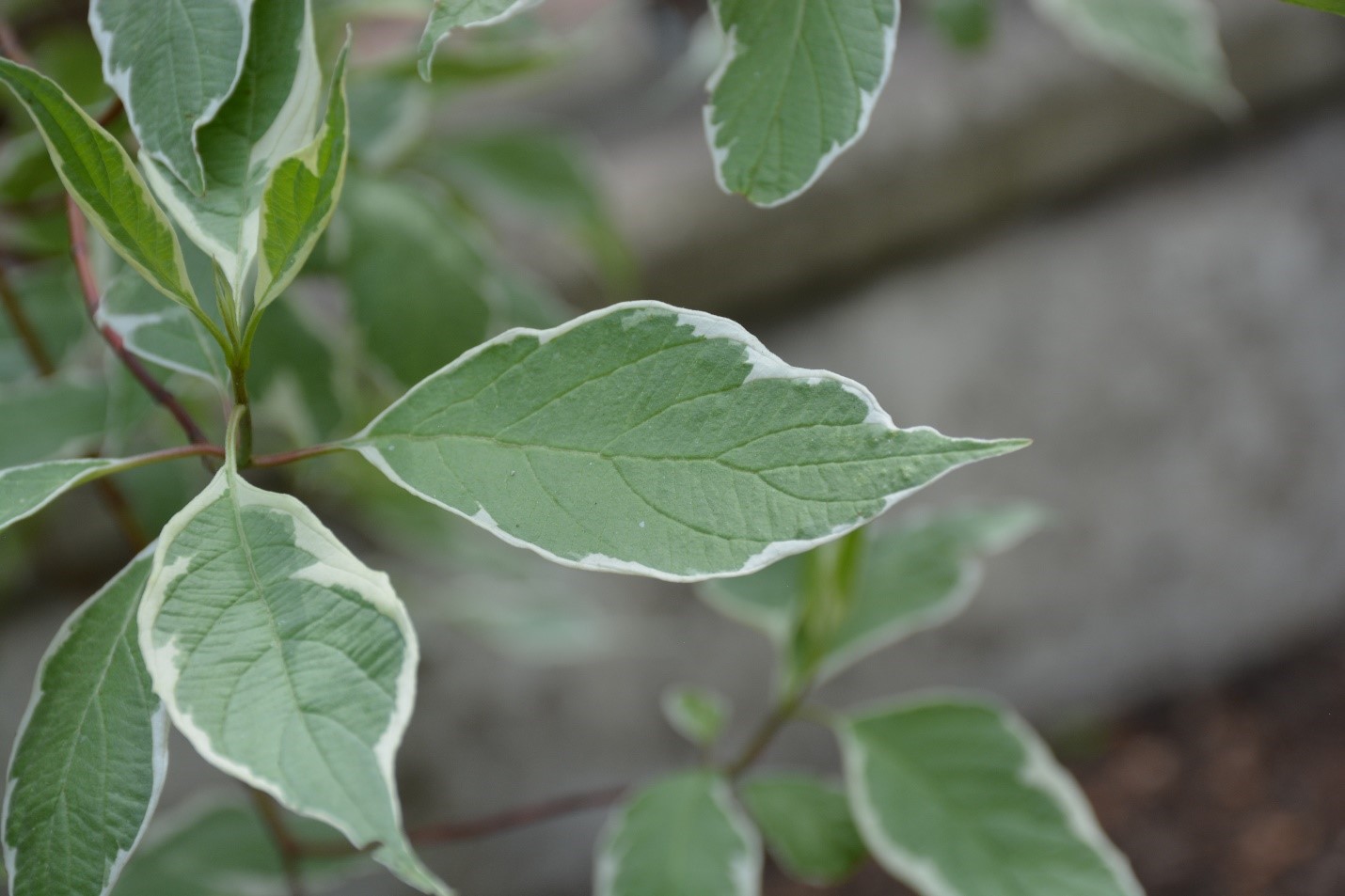Issue 9, August 18, 2022
Chimeras
I don’t often stop dead in my tracks for a Norway maple. But I recently came across a tree that warranted such action. The tree was mostly normal in its appearance. Its canopy consisted of typical green leaves for a Norway maple. What caught my attention was a small cluster of variegated leaves at the end of one branch. The variegated leaves were an example of a chimera, a situation in which the cells of more than one genotype (genetic makeup) are found growing adjacent to each other in the tissues of the plant. This chimera likely developed following a spontaneous mutation of a cell within the plants’ meristem. The cells that derived from the mutation were unable to produce chlorophyll, which gives normal leaves their green appearance.

Variegated Norway maple leaves are an example of a chimera, Travis Cleveland, University of Illinois.
There are three types of chimeras: Periclinal, Mericlinal, and Sectorial. Periclinal chimeras affect one entire layer in the meristem. They are relatively stable and can often be vegetatively propagated, leading to many of our variegated plant cultivars including the variegated Tatarian Dogwood (Cornus alba 'Argenteo-marginata').

The leaves of the variegated Tatarian dogwood are an example of a periclinal chimera, Travis Cleveland, University of Illinois.
Mericlinal chimeras are similar to periclinal chimeras in that only one meristem layer contains the mutated cells, but in this case, the mutation only extends across a portion of the cell layer. Mericlinial chimeras are unstable and usually involve a limited number of cells that only alter a small portion of the leaf’s appearance.
Sectorial chimeras result from mutations that affect sections of the apical meristem, the altered genotype extending through all the cell layers. This type of chimera is unstable and can give rise to both normal and mutated shoots and leaves. The variegation pattern on the Norway maple that I observed changed with each leaf, which leads me to believe it is a sectorial chimera.

Norway maple leaves showing a sectorial chimera pattern. The variegation pattern changes each time the plant produces a new leaf.
This newsletter focuses on the management of landscape pests. Since chimeras are not caused by a pest, I simply recommend enjoying nature’s creation. That said, I wrote about Cultivar Reversion in Issue 3 of this newsletter. That article focused on variegated plants reverting to the species' true form. The true-to-species tissues are generally more vigorous than the variegated parts of the plant. If allowed to remain on the plant, reversions may eventually outgrow and overtake the desirable cultivar. Your best course of action in that situation would be to prune out the reverted portion of the plant back to tissues displaying the desirable characteristics of the cultivar.
If you are interested in learning more about chimeras, I encourage you to view the following websites. They provide a more detailed explanation of chimeras and their development. The sites also include illustrations of meristems and the three types of chimeras.
https://propg.ifas.ufl.edu/03-genetic-selection/04-genetic-chimera.html
https://aggie-horticulture.tamu.edu/tisscult/Chimeras/chimeralec/chimeras.html
Author:
Travis Cleveland